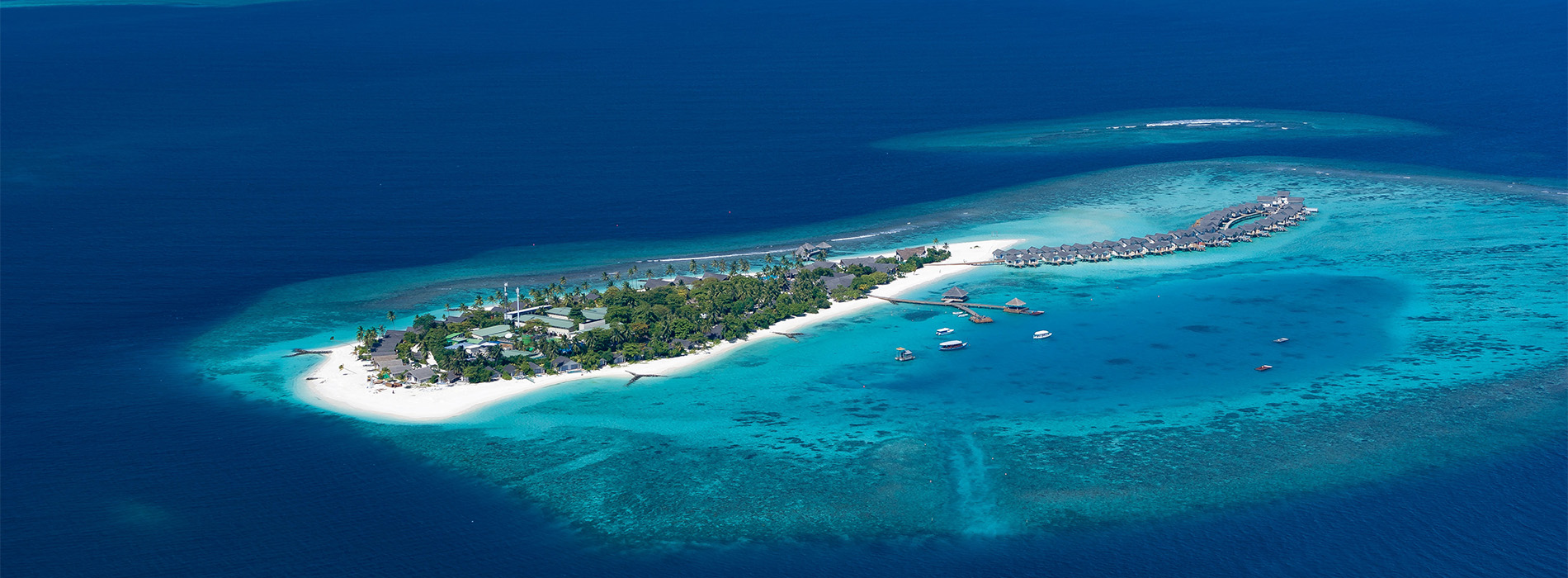Tamara Hinson heads to Cora Cora Maldives to discover why smaller islands are great alternatives to bigger resorts
Click here to download and save as a PDF
In the Maldives I’ve regularly found myself staring down at enormous islands, silently hoping the resort I’m about to land at isn’t the one with the kilometre-long, villa-lined boardwalk snaking out to sea. Don’t get me wrong – there are advantages to the larger islands, but Cora Cora Maldives, which opened last year, is a shining example of the benefits of smaller resorts.
It takes 45 minutes to travel by seaplane from Malé to Cora Cora Maldives, which is set across a 43-acre chunk of land on the Raa Atoll, and just a 10-minute walk from the pier to my villa. The resort has 45 beach villas and 55 overwater villas – the largest of which is the sprawling two-bedroom Lagoon Pool Villa, which has two storeys and a slide.
The highlight of my one-bedroom, overwater Lagoon Pool Villa is the semi-open-air bathroom. Next to the bath is a raised platform where hammock-style netting replaces the flooring and a section of wall has been replaced by a blind, which can be raised and lowered at will, creating the ultimate sunbathing spot.
I lose count of the hours I spend peacefully sprawled on the netting, watching fish swim by below.
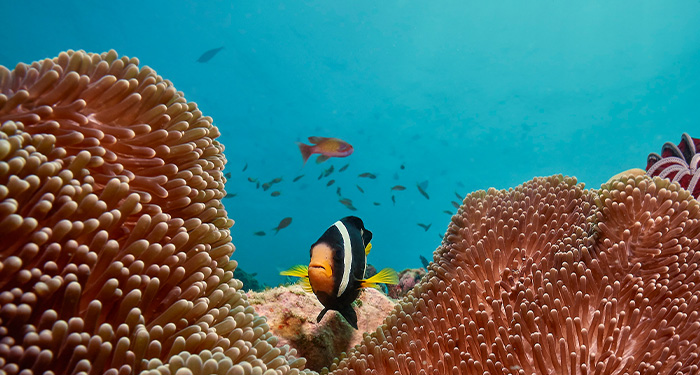
Built around nature
Unlike other resorts, with their multiple strings of overwater villas, the overwater accommodation lines a single boardwalk protruding from the island’s western tip. Most of the facilities are located on this side of the island, accessed via footpaths that weave through lush tracts of greenery.
There’s a sense that Cora Cora Maldives’ layout has been dictated by existing flora and fauna, rather than the other way around. Time after time I find crabs tottering along the boardwalk, having strayed onto the walkway accidentally (I take to carefully relocating them out of the path of the buggies driven by island staff) and at dusk, fruit bats flit between the palm trees.
There’s another benefit to Cora Cora Maldives’ smaller size. I quickly forge friendships with staff members, like Animesh, the food and beverage manager (I provide daily updates relating to whether I’ve made it to the gym, and he shows me his Fitbit step count).
Time after time I find crabs tottering along the boardwalk
I become firm friends with a South African family I meet on the Tsunami Island tour, and on my second evening Si’Noir, the resort’s resident DJ, invites me on a (albeit short) bike ride around the island. It’s this laidback approach that perfectly complements Cora Cora Maldives’ smaller size, and prevents claustrophobia from setting in.
Don’t get me wrong – there are plenty of activities on offer, but various extras hint at a more relaxed approach. For example, although there’s a wide range of watersports available, guests who fancy something more sedate can book guitar lessons with staff member Mohamed. The lessons are free, and more accomplished guitarists can simply spend an hour with him, jamming on the beach.
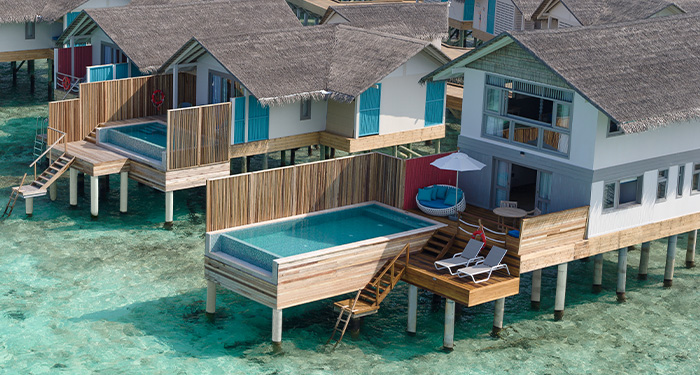
Underwater life
As a keen diver, I make a beeline for the dive school, which offers Padi Open Water Diver qualifications and excursions to several brilliant dive sites. On my first dive, I explore a vertiginous coral shelf with Maldivian divemaster Mode.
Within minutes, I see two scorpion fish and a moray eel that pokes its head out of a small hole before bearing its needle-sharp teeth. On my second day I see a large shark and too many eagle rays to count. The island’s size makes it a great option for kids, who seem to love hanging out in the open-air reception area with its stacks of books and ping pong table.
Just a few metres away is the MyCoffee bar, which doesn’t just serve delicious coffee (roasted on the island) but smoothies, milkshakes and ice cream too. At the Kids’ Club, for kids aged between three and 12, activities include yoga, dance-offs and nature sessions that provide an insight into the island’s flora and fauna.
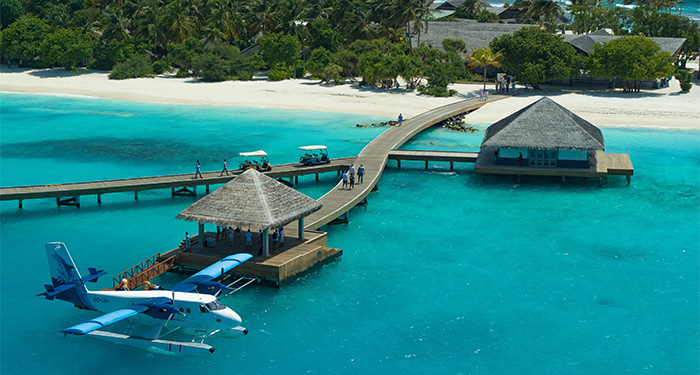
Small packages
It’s hard not to feel relaxed. In between my boardwalk crab relocations, I sprawl on my sundeck, working my way through the stacks of books dotted around my villa. There’s no in-villa dining, but the nearest restaurant is never far away. Acquapazza is Cora Cora Maldives’ Italian restaurant, while Tazäa is both the breakfast and all-day dining option.
Ginger Moon celebrates Asian cuisine with lesser-known dishes such as soto ayam, a traditional Indonesian chicken broth, and samgyeopsal, a Korean dish made with pork belly. But my favourite is Teien, the Japanese restaurant where I indulge my love of teppanyaki.
It’s the only culinary experience that requires a supplement – of £62 per person. By the end of the week, I’ve fully embraced smaller-island life, and Cora Cora Maldives’ slower pace. Getting to my favourite restaurant doesn’t involve a 10-minute buggy ride, but just a relaxed walk through the resort – and there’s a sense of freedom in knowing nothing is far away. The best things really do come in small packages.
Fast Fact
Cora Cora offers one of the Raa Atoll’s widest selection of Padi diving courses, ranging from Bubblemaker courses for children trying scuba diving for the first time through to Advanced Open Water Diver courses and rescue diver courses. The resort also offers Padi Freediving courses alongside freediving taster sessions.
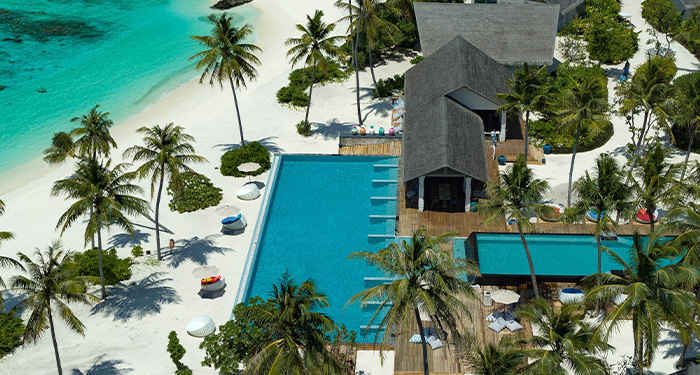
Dive into culture
As the first resort in the Maldives to have a licensed art gallery and museum on site, Cora Cora Maldives’ other USP is connecting guests with culture and history. The one-room Dutch Onion museum is packed with artefacts found on the Raa Atoll – including pre-Qing dynasty porcelain bowls.
Guests can also visit a small archaeological site in the centre of the island, where they can see the remains of two wells – believed to have been used for ceremonial bathing by visitors to a temple that once stood here.
Cora Cora Maldives also offers an excursion to Kandholhudhoo or ‘Tsunami Ghost Island’, which was abandoned after the 2004 tsunami when most of the dwellings were destroyed and its inhabitants had to be relocated. In the abandoned school, rusted signs advocate the benefits of an apple a day and in one building, a thick vine pierces the brickwork, snaking along a crumbling wall.
The tour is sensitively done; our guide points out that it’s a startling example of how quickly nature reclaims places like this, and it’s fascinating to see how some of the Maldives’ oldest houses were constructed from coral blocks. Excursions to the island of Kandholhudhoo cost $90.
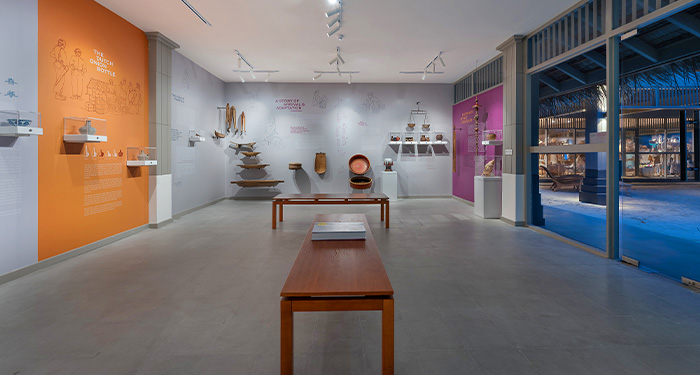
Book it
No News No Shoes sells via agents and offers seven nights at Cora Cora Maldives from £6,462 for two adults, staying in a Beach Villa on a premium all-inclusive basis on September 13. The price includes international flights and seaplane transfers.
nonewsnoshoes.co.uk
Read more
8 of the best all-inclusive resorts new for 2022
Lesser-known islands for an Indian Ocean holiday
The Maldives’ most innovative resorts

